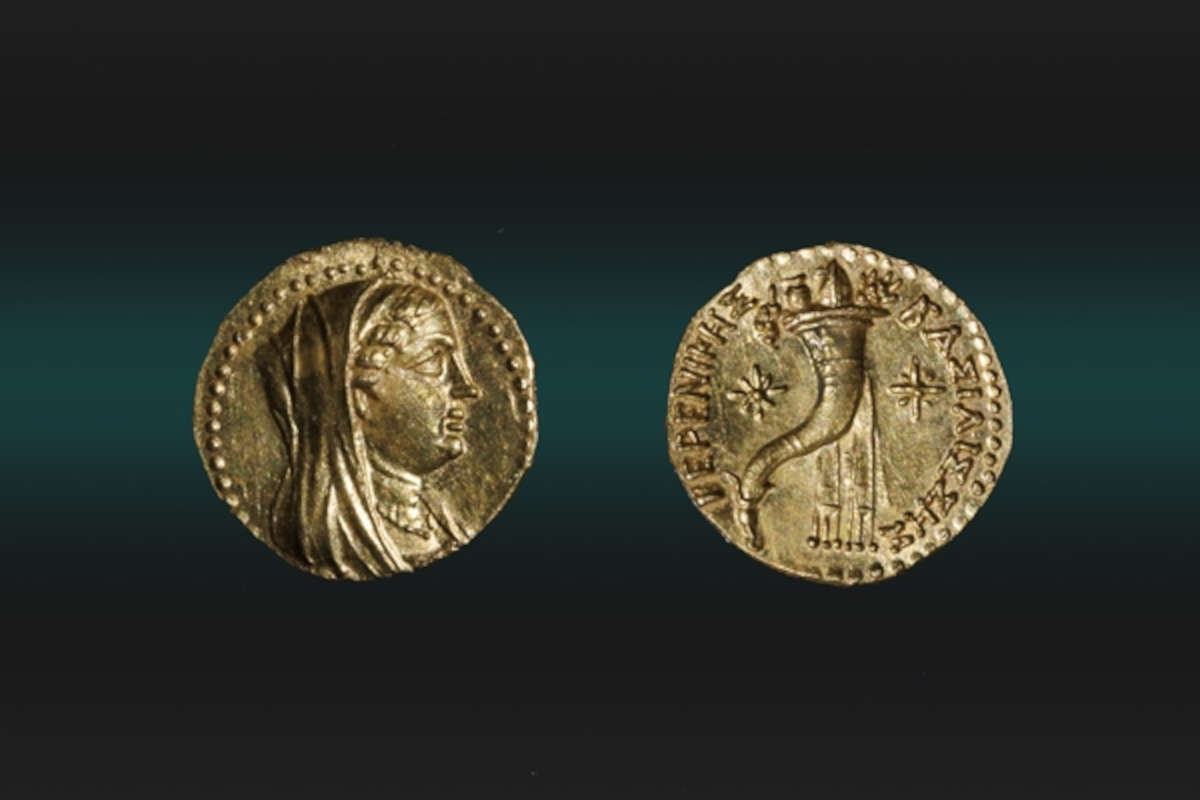A discovery considered to be of exceptional rarity and historical value has emerged from excavations at the City of David in Jerusalem: a gold coin bearing the portrait of Hellenistic Queen Berenice II of Egypt, dating back some 2,200 years. It is a find that sheds new light on the city’s role in the Hellenistic period and its connection to the great powers of the eastern Mediterranean.
The coin was found in the excavation area of the Givati parking lot, part of the City of David National Park, during a soil sifting activity. It was spotted by archaeologist Rivka Langler, who was participating in the excavation: “I was sifting through the soil when suddenly I saw something shiny. I picked it up and realized it was a gold coin. At first I couldn’t believe it, but after a few seconds I was running excitedly through the excavation. I have been digging in the City of David for two years, and this is the first time I have found gold! I’ve always seen other archaeologists make special finds, I’ve been waiting for my moment - and it’s finally here!”
The coin, a small denomination - a quarter drachma - was struck in pure gold (99.3 percent) between 246 and 241 BCE, during the reign of Ptolemy III, husband of Queen Berenice II. The obverse features a portrait of the sovereign, with a diadem and veil, as well as a necklace around her neck. The reverse depicts a cornucopia, a symbol of fertility and prosperity, flanked by two stars, with the Greek inscription “Of Queen Berenice.” The inscription is of special value: coins at that time rarely bore the name of a queen, and in the case of Berenice the attribution “Basilisses” (i.e., “of the queen”) seems to suggest an autonomous dignity and direct political power, not just as consort of the ruler.
The coinage, which most likely took place in Alexandria, would have been linked to the victorious return of Egyptian troops from the Third Syriac War, fought against the Seleucid kingdom of Syria, a major rival Hellenistic power. The coins were probably made in limited series to be distributed as prizes to soldiers, a gift of high symbolic and material value.

According to Dr. Robert Kool, head of the Numismatics Department at the Israel Antiquities Authority, and Dr. Haim Gitler, curator of Archaeology and Numismatics at the Israel Museum, the discovery is of unique significance. “As far as we know, the coin is the only one of its kind ever discovered outside Egypt, which was the center of Ptolemaic rule,” they say. “Only about 20 such coins are known, and this is the first one ever found in a controlled archaeological excavation, making it a find of extraordinary scientific importance.” Until now, the known specimens came from private collections or antique markets, thus lacking information about the original context. The Jerusalem coin, in contrast, offers valuable data on the historical framework in which it circulated.
Berenice II, daughter of King Magas of Cyrene and wife of Ptolemy III, reigned in Egypt from 246 to 222 B.C.E. She is a figure known for her political and cultural influence, also linked to the famous “Berenice’s Hair,” the constellation that bears her name and which, according to legend, was born from the sacrifice of her beautiful hair dedicated to a deity to propitiate her husband’s victory. Her depiction on a coin with a royal title, while alive, is a significant event and confirms the exceptional status of this ruler within the Ptolemaic dynasty. The presence of the cornucopia on the reverse completes the symbolic picture of the coin. This emblem, which appears in numerous Hellenistic and Roman coinage, recalls the fertility, abundance, and prosperity guaranteed by royal power. In the case of Berenice, the combination with the royal inscription reinforces the idea of a sovereign figure not only associated with the king, but able to personally embody the values and promises of the dynasty.
Yiftah Shalev, director of the excavation for the Israel Antiquities Authority, says along with Efrat Bocher of the Center for the Study of Ancient Jerusalem, “The fact that such a rare coin was discovered in Jerusalem during the period when it was under Ptolemaic rule offers a fascinating insight into the status of the city in those years and the possible relationship between local authorities and the Ptolemaic empire. The coinage has great implications for the development of Jerusalem after the destruction of the First Temple. Until now, the prevailing view was that after 586 BCE. Jerusalem was a marginal and economically weak town. The coinage-along with other findings from the mid-3rd century BCE-begins to show a different picture: Jerusalem seems to have recovered as early as the Persian period and strengthened under Ptolemaic rule. In the centuries following the destruction of the First Temple it was not desolate and isolated, but rather a city in the process of renewal, reestablishing ties with the political, economic and cultural centers of the time.”
The coin will be officially unveiled to the public in early September at the annual City of David Research Conference, which each year brings scholars and onlookers to discuss the latest archaeological discoveries from the Jerusalem area.
 |
| Rarest gold coin of Queen Berenice II of Egypt discovered in Jerusalem. |
Warning: the translation into English of the original Italian article was created using automatic tools. We undertake to review all articles, but we do not guarantee the total absence of inaccuracies in the translation due to the program. You can find the original by clicking on the ITA button. If you find any mistake,please contact us.